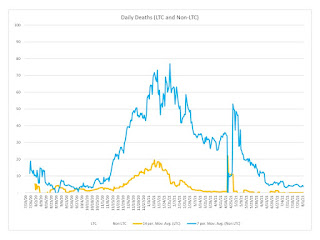In a recent Nature piece the author notes:
Rather often, I go to a research talk and feel drowned in data. Some
speakers seem to think they must unleash a tsunami of data if they are
to be taken seriously. The framing is neglected, along with why the data
are being collected; what hypotheses are being tested; what ideas are
emerging. Researchers seem reluctant to come to biological conclusions
or present new ideas. The same occurs in written publications. It is as
if speculation about what the data might mean and the discussion of
ideas are not quite ‘proper’.
The biological sciences are dominated by presentations of slides jammed with data. The scientists, especially if younger, will wave their arms in an attempt to establish the meaning of these jumbled data points. The author continues:
I have a different view: description and data collection are necessary
but insufficient. Ideas, even tentative ones, are also needed, along
with the recognition that ideas will change as facts and arguments
accumulate...The next step is to extract knowledge from the data. To refocus on that
goal, we must improve our working processes, placing a greater emphasis
on theory and shifting our research culture...How? Embed engineers and experimentalists who are developing new
technologies and methods deeply into the biological problems. It is
through deep familiarity with the biology — not simply a drive to
collect more and more data — that important questions will be asked.
My view over the past decade is to examine the data as parts of a system. One should have a discussion comparable to what was done in communications almost a century ago. Use the knowledge of the electron, of metals, of vacuums, and use them synergistically to build a radio. Use the data from a systems perspective, examine the problem as an integrated whole, using the data to connect the elements to the next level. Build across not just dig deeper.
Take cancer as an example. Twenty years ago we focused on internal pathway controls such a those in CML. Then move to immune control focusing on cell targets.But at each step we find other countervailing factors such as the protective ability of the tumor micro environment, miRNAs, glycans, epigenetic factors, and the list goes on. What is take the list and look at it as an integrated system, with levers to control. Let the deep dives continue but they would assist in building a better integrated system.
Just a thought.











































